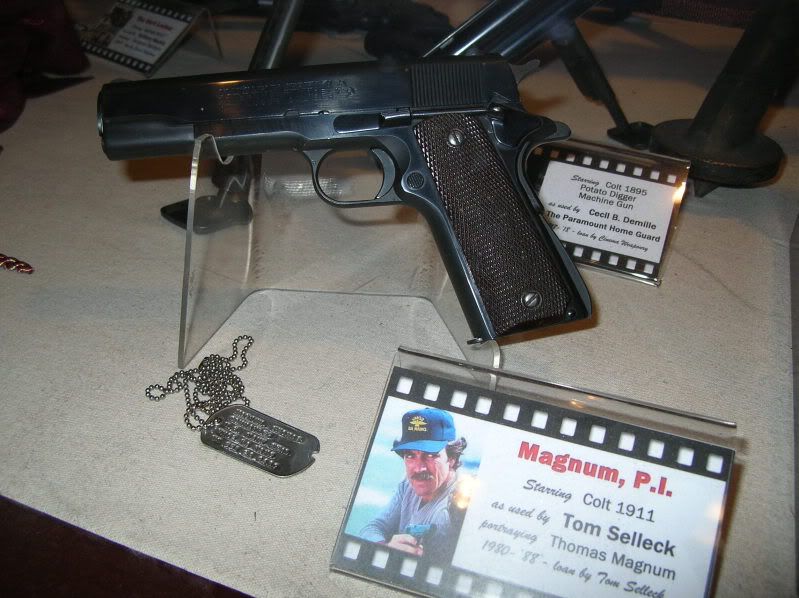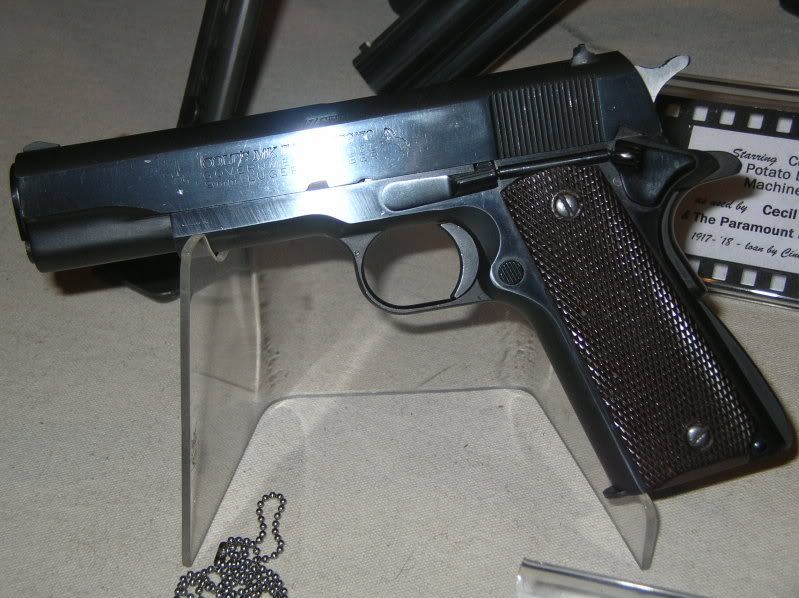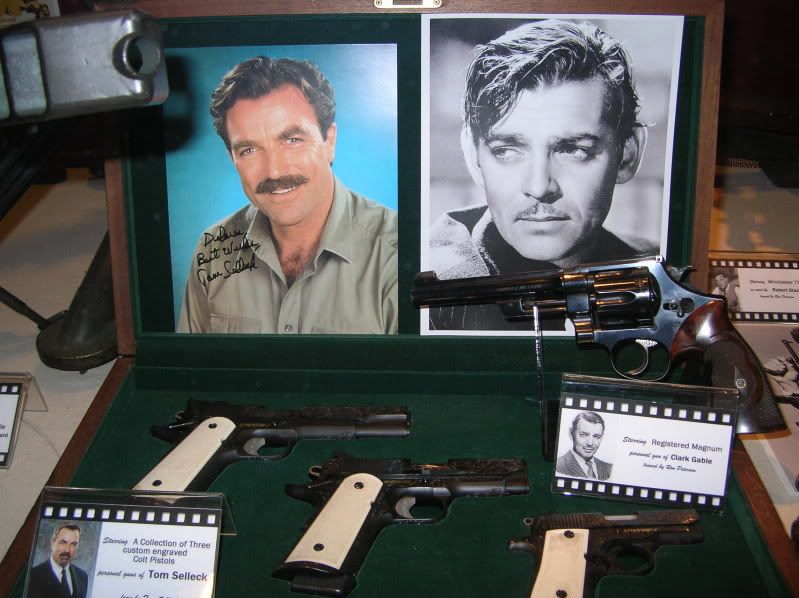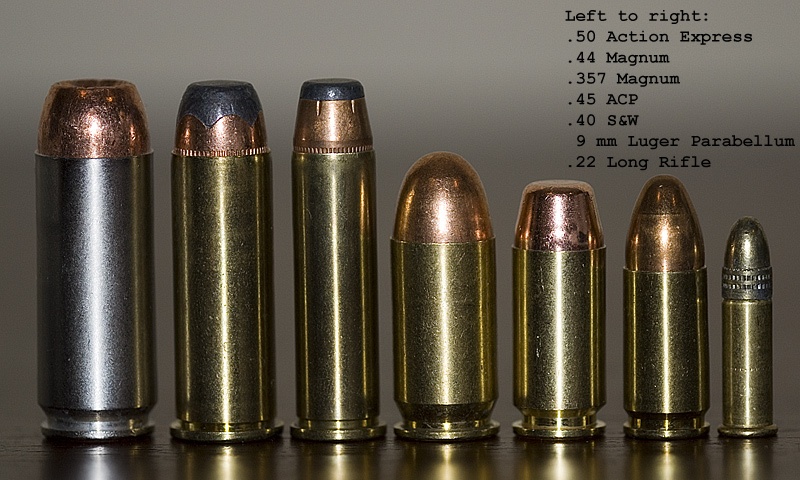Walks wrote:So, if I want one, and if I don't want to do any modifications to it (outside of maybe changing the grips) what should I get.
A Colt, for sure, right? But then what?
It depends on whether you want one like the most common prop or if you want one like what the gun was supposed to be.
If you want one like the most common prop, you'll need to find a Colt MKIV/Series 70 Government Model chambered for 9mm Luger. The original Series 70 was manufactured from about 1971 to 1983. The only thing you'd need to change would be the grips, and the most accurate grips would be some original USGI M1911A1 walnut grips (probably hard to find), or some older commercial Colt Government Model fully checkered walnut grips, used on CGMs from the mid-1920s until the 1950s when they started coming with hard rubber grips. The older M1911 style "double diamond" grips are not correct.
Unfortunately, that M1911 (pre-A1) style of grip has seen a revival (maybe because they are fancier looking), and it is very difficult these days to find newly manufactured walnut grips in the A1 style; they are nearly all in the pre-A1 "double diamond" style. For my gun (pictured in my previous post), I finally found some A1-style fully-checkered walnut grips from Herrett Stocks. They have been around a long time and are very high quality. The ones they sent me were beautifully made, and fit perfectly, and they were only twenty someodd dollars (5 or 6 years ago). HB-1 is the model number (
link), and be sure to ask for traditional black walnut (the ones pictured are an exotic wood called Cocobolo, which is not correct in this context, and is more expensive).
On the other hand, in the context of the show, the 9mm prop guns are "playing the role of" a "forty-five" (.45 ACP), which is the cartridge that the 1911/CGM was originally designed for, and the cartridge that all USGI M1911s and M1911A1s were chambered for. They didn't use .45 ACP CGMs for props because at the time, they couldn't get them to cycle blanks reliably.
With that in mind, beyond the chambering, what the gun is actually supposed to be in the context of the Magnum, P.I. universe is open to interpretation, i.e.; is it supposed to be a USGI M1911A1 or is it supposed to be a commercial Colt Government Model? If you believe it is supposed to be a CGM, then, ironically, an early (pre-1988 or so) Series 80 .45 looks more like a Series 70 9mm than a Series 70 .45 does. The reason is that Series 70 .45s had standard M1911A1-style ejection ports, while Series 70 9mms (like the MPI props) had
lowered ejection ports. However,
all Series 80 CGMs have lowered ejection ports, regardless of the cartridge they are chambered for.
If you believe that the gun is supposed to be a USGI M1911A1, then be prepared to open your wallet wide, especially if you want an early blued one with walnut grips in good condition to most closely resemble the MPI props. All USGI M1911A1s sell for big money these days, especially ones in good condition, and especially rare ones like the early blued ones with walnut grips. I would estimate $5,000 or more for such a gun.
So:
• To duplicate the typical MPI prop: S70 CGM 9mm; replace grips.
• To most closely duplicate the appearance of the typical MPI prop, but in "forty-five": Early S80 CGM .45 ACP; replace grips (an early S80 will already have a steel mainspring housing and trigger from the factory, unlike my late 1980s S80 that came with a plastic mainspring housing and trigger).
Alternatively, an original Series 70 CGM or one of the currently manufactured Series 70 reissues is an awesome gun, if you don't mind the slight visual difference of its standard ejection port vs. the lowered ejection port of the MPI props.
• To most closely duplicate the appearance of the typical MPI prop, but in the form of a USGI M1911A1, look for a Colt-manufactured M1911A1 in good condition, manufactured between 1924 and about 1941 ($$$).

















